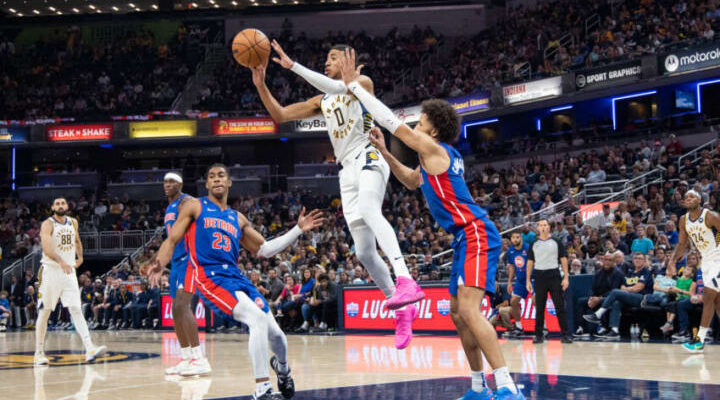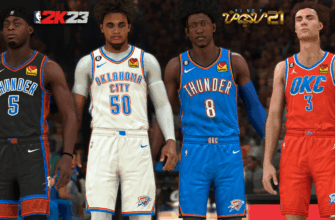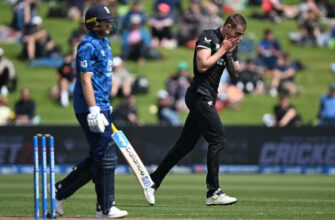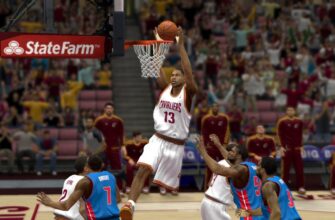In the cutthroat world of the National Basketball Association, championships are won not just on the hardwood, but often years in advance, in the quiet back rooms where draft picks are hoarded, analyzed, and strategically deployed. As the 2025 NBA champions, the Oklahoma City Thunder, vividly demonstrated, future first-round draft picks are no longer mere lottery tickets; they are the bedrock of sustainable franchise success.
- The “Thunder Blueprint”: A Masterclass in Asset Management
- Why Future Draft Picks are NBA Gold
- The Strategic Landscape: Who`s Best Positioned?
- 1. Oklahoma City Thunder: The Dynasty Builders
- 2. Brooklyn Nets: The Calculated Dive for 2026
- 3. Utah Jazz: The Protracted Patience
- 4. Houston Rockets: The “Win-Now, Win-Later” Contenders
- 5. Memphis Grizzlies: The Strategic Pivot
- Beyond the Top Five: The Wider Landscape
- Contenders` Conundrum: Trading Stars and Keeping Options
- The Chess Match Continues
The “Thunder Blueprint”: A Masterclass in Asset Management
The Thunder`s journey from a promising, yet perpetually rebuilding, squad to legitimate champions in 2025 serves as the definitive blueprint for modern NBA team building. Their audacious 2019 trade of Paul George for Shai Gilgeous-Alexander and a veritable treasure chest of draft picks was initially met with skepticism by some, but history has proven it a masterstroke. Six years later, Gilgeous-Alexander is a reigning MVP, surrounded by home-grown talent like Jalen Williams and Chet Holmgren, all nurtured through the very draft capital acquired in that seminal deal. This isn`t just about drafting well; it`s about creating a perpetual pipeline of talent, financial flexibility, and strategic leverage that allows a franchise to adapt and thrive.
Today, five teams—the Thunder themselves, the Brooklyn Nets, Utah Jazz, Houston Rockets, and Memphis Grizzlies—collectively possess a staggering 55 first-round picks over the next few seasons. This accumulation speaks volumes about a league-wide shift: draft assets are the ultimate currency, whether to select future stars, trade for established talent, or navigate the complex financial waters of new collective bargaining agreements.
Why Future Draft Picks are NBA Gold
The value of a future first-round draft pick extends far beyond the immediate thrill of a draft night selection. These assets are critical for several reasons:
- Rebuilding Power: For struggling franchises, picks offer the clearest path to acquiring top-tier talent, a fundamental step towards competitiveness.
- Trade Currency: Want to land a superstar? Picks are often the non-negotiable price of admission, allowing teams to acquire proven talent without gutting their current roster.
- Financial Flexibility: Rookie contracts are team-friendly, allowing teams to control costs and build depth without instantly hitting salary cap apron restrictions, a particular boon in the evolving financial landscape of the NBA.
- Long-Term Stability: A steady stream of draft picks ensures a continuous influx of young, developing talent, providing a hedge against injuries, free-agent departures, and aging rosters.
The Strategic Landscape: Who`s Best Positioned?
1. Oklahoma City Thunder: The Dynasty Builders
Even as they commit massive contracts to their young core, projecting them into the dreaded “second apron” luxury tax tier, the Thunder remain uniquely positioned. With 13 first-round and 16 second-round picks over the next seven years, their financial flexibility remains unparalleled. This arsenal allows them to offset rising payrolls, make strategic trades, or even continue drafting high-upside prospects. Imagine a championship team potentially still drafting in the lottery – a scenario that could unfold for OKC in 2026, thanks to protected picks from Philadelphia and swap rights with the Clippers and Mavericks. It’s almost unfair, isn`t it?
2. Brooklyn Nets: The Calculated Dive for 2026
The Nets` strategy is a fascinating exercise in controlled demolition. With an eye on the highly anticipated 2026 draft class, they are deliberately prioritizing player development and top lottery odds for next year. While they have 13 incoming first-round picks, their 2027 pick swap with the Houston Rockets creates a critical inflection point. The tantalizing prospect of a transformative player from the 2026 class, featuring names like Darryn Peterson or A.J. Dybantsa, means that even a “tanking” team might not need the #1 pick to land a future cornerstone. This rebuild isn`t for the faint of heart, but the potential payoff is colossal.
3. Utah Jazz: The Protracted Patience
The Jazz find themselves in a peculiar state of limbo, with a rebuild that began in 2022 still searching for definitive results. Despite claims of not “tanking,” their incoming 11 first-round picks suggest a long game. Key young talents like Ace Bailey and Kyle Filipowski are critical to their future, and how they develop will dictate the Jazz`s next moves. Their valuable 2026 first-rounder (if it falls within the top-8) and the unprotected 2031 Phoenix Suns` pick offer significant leverage. Utah’s journey is a testament to the fact that patience, while often frustrating for fans, is a virtue in NBA asset management.
4. Houston Rockets: The “Win-Now, Win-Later” Contenders
The Rockets are performing a high-wire act, balancing immediate contention with an eye on the future. The acquisition of Kevin Durant signals their championship aspirations, yet they still boast 9 first-round picks. The unprotected 2027 pick from Phoenix is their potential lottery ticket, especially given the Suns` current roster reset. This leads to a fascinating dichotomy: the 2026 draft class is lauded by executives, while the 2027 class is widely perceived as underwhelming. How this perception influences the valuation and trading of those 2027 picks will be a compelling subplot in the coming seasons. A “bad draft” doesn`t mean no stars, but it certainly shifts the market dynamics.
5. Memphis Grizzlies: The Strategic Pivot
The Grizzlies made a shrewd move by trading Desmond Bane for draft assets, signaling a shift towards long-term growth even with stars like Ja Morant and Jaren Jackson Jr. on the roster. Their 9 first-round picks, particularly the unprotected 2026 Phoenix pick, offer a valuable safety net and multiple swings at top talent without having to completely bottom out. Memphis has a strong track record of building through the draft, and this patient approach suggests confidence in their ability to identify and develop talent.
Beyond the Top Five: The Wider Landscape
The strategic battle for draft capital extends beyond these top five. Teams like the Charlotte Hornets and Washington Wizards are firmly committed to the long game, boasting a combined 47 draft picks over the next seven years and a plethora of players on cost-controlled rookie contracts. Their patience is either commendable or Sisyphean, depending on one`s perspective.
Even teams making aggressive moves, such as the Portland Trail Blazers acquiring Jrue Holiday and Damian Lillard, have managed to retain significant future assets. The Blazers, for instance, hold some of the most and least favorable 2029 first-round picks, alongside swap rights with Milwaukee, showcasing the complexity of modern trade negotiations.
Contenders` Conundrum: Trading Stars and Keeping Options
What about teams that have already traded significant draft capital for immediate superstar impact? The Golden State Warriors, after trading for Jimmy Butler, still hold four future first-round picks, but face the challenge of limited sizable contracts for further trades. The Los Angeles Lakers, despite having LeBron James and Luka Doncic on their roster, have abundant expiring contracts but are severely constrained by only one tradable first-round pick in 2031 or 2032.
Conversely, the San Antonio Spurs, even after trading four firsts for De`Aaron Fox to pair with Victor Wembanyama, still possess an impressive haul of future picks and swap rights. Their 15 second-round picks also provide immense flexibility, proving that even after making a big splash, a well-managed front office can maintain future optionality.
The Chess Match Continues
The NBA`s future is a grand chess match, with draft picks serving as pawns, knights, and even queens on the board. The foresight and strategic acumen required to accumulate, protect, and ultimately leverage these assets are what separate fleeting contenders from enduring dynasties. As the league evolves, one truth remains constant: the teams that understand and master the art of draft capital management will be the ones hoisting trophies for years to come.







